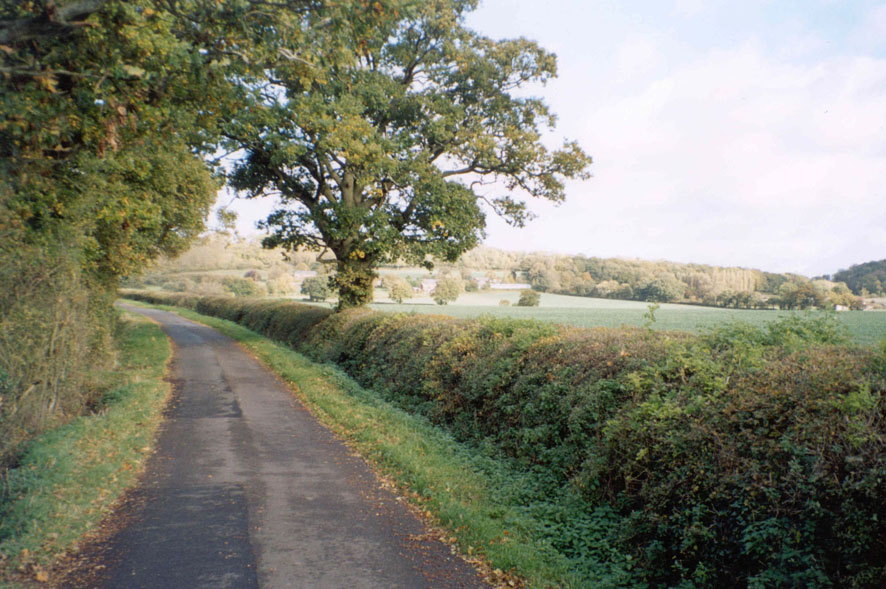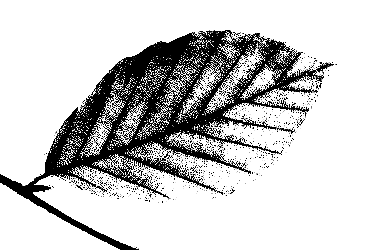| |
|
|
| HEDGEROWS:
A GOOD-PRACTICE GUIDE |
|
Hedgerows
should be considered a complete ecosystem, rather than a dull line of single
species. Modern hedges which result from poor farm maintenance practice and
unimaginative planting of single species provide little in the way of biodiversity,
shelter, food or visual pleasure.
|
| PLANTING SCHEMES |
|
From a conservation and
wildlife perspective deep hedges are far preferable. A newly
planted hedge with plants jammed together is either a throwback to days when
hedges were planted primarily to provide a barrier to livestock, or a requirement
for hedging grants under the Countryside Stewardship Scheme
Good
preparation makes planting much simpler: it is easy to plant into ground
that has been rotovated or ploughed; in clay soils this also makes it much less
likely that soggy pockets will develop which will rot the roots.
For wildlife conservation,
we suggest the following scheme.
· Turnover, plough or rotovate an area 1.5 metres
wide
· If possible arrange to turn over a furrow on either side of the
planting area towards the centreline to create a small plateau, with a ditch
on either side - this ditch helps retain moisture, reduces soil erosion, absorbs
fertilisers, and can create a local damp microclimate
·
Plant hedging whips (bare rooted plants 1 to 2 years old)
in two rows, at 0.33 to 0.5 m centres with at least 1 metre between
rows.
· Plant trees or large native shrubs in the gap
between rows and mark them with fluorescent tape
· Mulch the trees using mulch mats or loose materials such
as straw (to 10 cm depth) or newspapers topped with soil : ensure the mulching
material does not touch the plant
·
Mulch the hedging plants if at all possible (around
50% of amenity trees and shrubs planted in UK die during the first 3 years
due to lack of moisture)
· Establish rabbit protection if there is a rabbit problem in the
area, using either large diameter spiral guards or wire mesh (see comment on
spirals below) (for suppliers see, amongst others http://www.acorn-p-p.co.uk/))
· Check planting and anti rabbit precautions: water if possible
during dry spells. Gap-up during the winter planting season if any plants have
died.
The gap
between rows may seem big, but this is where the smaller mammals and birds will
get their shelter; this gap also acts as a corridor for wildlife.
|
| VARIETY |
|
A species
list is on our website (species list): a mixture is
essential to attract a variety of animal life, don’t forget understorey plants.
If you want to grow plugs, use seed trays filled with poor quality soil using
seeds collected locally, or obtained from suppliers like Emorsgate. These trays
will get plants like primrose, foxgloves, campion, yarrow, sorrel, herb bennet,
common vetch etc. established quickly.
Where possible
source suitable plants from nurseries which grow from locally grown seed stock.
Some sources of good provenance are given on our Links page. Beware of cultivated
plants from overseas.
The most
reputable suppliers will be able to give seed provenance.
|
| PROTECTION |
|
Protecting
plants is important: large diameter spiral rabbit guards are acceptable
for a short period only; used for longer periods they prevent air circulation and allow mould infection, and produce spindly plants; Plastic mesh guards are better than
spirals, though more expensive. For longer runs, chicken wire fencing (600
mm high, with maximum 30 mm mesh size, fixed top and bottom by high tensile wire, with
stakes at 8- 10 m intervals) is more economical, and makes for a healthier hedge
than spirals) - see the excellent BTCV guide on fencing for more information ((http://handbooks.btcv.org.uk/handbooks/)
Tree guards should be used to
prevent deer browsing on the leading shoots of trees; these also speed growth of trees in their early years.
A large
proportion of amenity trees and shrubs die due to neglect, mainly from lack
of water, or from weed encroachment. Mulching with horticultural plastic, newspaper
covered with earth, grass cuttings or straw works well. This is particularly
important to enable any new trees to get a good start. It is possible
to buy mulch mats made of plastic or bitumen (which degrades).
|
| MAINTENANCE |
|
Modern farming practice
has resulted in huge amounts of damage to hedges; you will have seen gappy hedges,
with no base, caused by careless or thoughtless trimming with flails. ‘A’ shaped
hedges are much preferable-they are healthier, stronger and offer a better habitat
for wildlife, and better shelter for livestock.
Hedge bases are an
important habitat for all wildlife. Cutting of hedge base vegetation,
particularly in autumn, should be avoided where possible.
The tops of hedge plants should trimmed lightlyat p[lanting time to encourage bushy growth.
Hedge cutting
should only be undertaken during the early spring, in order to avoid the start
of bird nesting and to reduce damage to the food supply, and should not be carried out annually. Flails can be used providing the wood is not too thick;
scissor action cutters are better. Trimming should follow the direction
of any previous hedgelaying to minimise damage to the wood.
A
healthy hedge can normally recover well from severe cutting, but repeated cutting
can gradually cause whole hedges to die off. One major problem associated with
mechanized hedge cutting is the decline in the number of saplings left in hedges
to grow into mature trees Marking these with fluorescent tape will assist their
survival.
As hedges
grow, they gradually become more tree-like; gaps tend to appear lower down and
the stems cease to provide an effective barrier. At this point, the hedge should
be allowed to grow sufficiently tall so that it can be laid, both to fill in
the gaps and to ensure the long-term viability of the hedge by promoting vigorous
regrowth from the base of the hedge. If the hedge is in very poor condition
coppicing may be the best solution.
|
| HEDGE
SHAPE |
|
A ‘modern’
vertical-sided hedge is almost useless as a source of food and shelter. An “A”
shape is good, a rounded shape even better.
This wildlife-friendly hedge is in East Hampshire.

|
| HEDGELAYING |
|
Hedgelaying
involves cutting nearly all the way through the base of the stems and laying
them over at an angle of about 30 degrees. The cut stems (pleachers), are laid
parallel to each other.
Typically,
hedges are staked vertically and bound horizontally for strength and to achieve
the thickest possible hedge.
Stumps are cut as cleanly
as possible; this is where regrowth is required . Eventually a new hedge will
grow from the established root system. Meanwhile, the laid pleachers act as
a stock barrier and protect the regrowth from browsing.
Hedges
can survive indefinitely if laid every 15 to 25 years. This cost is roughly
equivalent to that of fencing.
Coppicing
a hedge, i.e. cutting it off completely at just above ground level, is also
a good way of revitalizing hedges. Coppicing will often take place in conjunction
with gapping up and is the best treatment for hedges damaged by over flailing
or poor shaping.
|
| DOS AND DON’TS |
|
|
| DO |
|
Encourage mixed species
hedges, through new planting, or gapping up |
Protect the plant
roots from drying out when planting : 5 minutes exposure to a breeze or
strong sunshine can kill a plant |
Mark newly planted
trees with fluorescent tape to ensure they don’t get chopped during hedge
cutting |
Use locally grown
plants of known provenance |
Protect your plants
well during planting; a plant with dried roots is well in its way to being
dead |
Hedgelaying : this
is recommended as a method for hedge-rejuvenation, wildlife conservation
and stockproofing. |
Mark saplings to ensure
they do not get flailed |
|
| DON’T |
|
Attempt to infill
a gappy hedge unless the gaps are few: it is often better to coppice the
hedge or fill gaps with new plants, or grub out and replant completely |
Use a flail except
on green growth (Finger bar cutters with reciprocating
blades are better) |
Flail during nesting
season |
Flail when there are
seeds on the hedge – to all intents this means cutting in January and
February only |
Flail established
trees |
Apply herbicides,
pesticides or fertilisers within 1.5m of a hedgerow |
Attach fencing wire
to hedgerow trees and shrubs |
Plant poisonous plants
such as yew or box where farm stock or horses can get near the hedge |
Plant during very
dry, windy or frosty periods |
|
| OTHER
THOUGHTS |
|
In a new hedge, put in some
shelter for smaller animals - broken clay pipes or pots for frogs and toads
– small piles of logs for snakes, mice, insects, beetles etc.
|
| MORE GUIDANCE |
|
Durham
County Council produce good guides : one is
http://www.durham.gov.uk/durhamcc/usp.nsf/Lookup/HedgeLayingPlanting03/$file/HedgeLayingPlanting03.pdf
An excellent guide can be
obtained from the BTCV (though not free), which goes
into considerable details about hedges, planting, maintenance, laying etc.
Other sites in our links
page also give plenty of useful information; in particular we recommend the
authoritative site
http://www.durham.gov.uk/durhamcc/usp.nsf/pws/ETS+Projects+-+County+Durham+Hedgerow+Partnership-Technical+Guidance+Documents
Your local
Wildlife Trust may be able to offer assistance for suitable schemes in terms
of volunteer or highly subsidized labour. (see Links)
|
| REFERENCES |
|
http://www.agroecol.co.uk/Assets/Guidelines2.htm
http://handbooks.btcv.org.uk/handbooks/
http://www.rspb.org.uk/gardens/advice/gardenhedges/index.asp
http://www.nhm.ac.uk/science/projects/fff/
http://www.educagri.fr/hedges/eng/species/frame.htm
http://naturenet.net/trees/hedgerow/
http://www.englishplants.co.uk/trees.html
or see our links page (link
to) |
| |
|
Return
|


